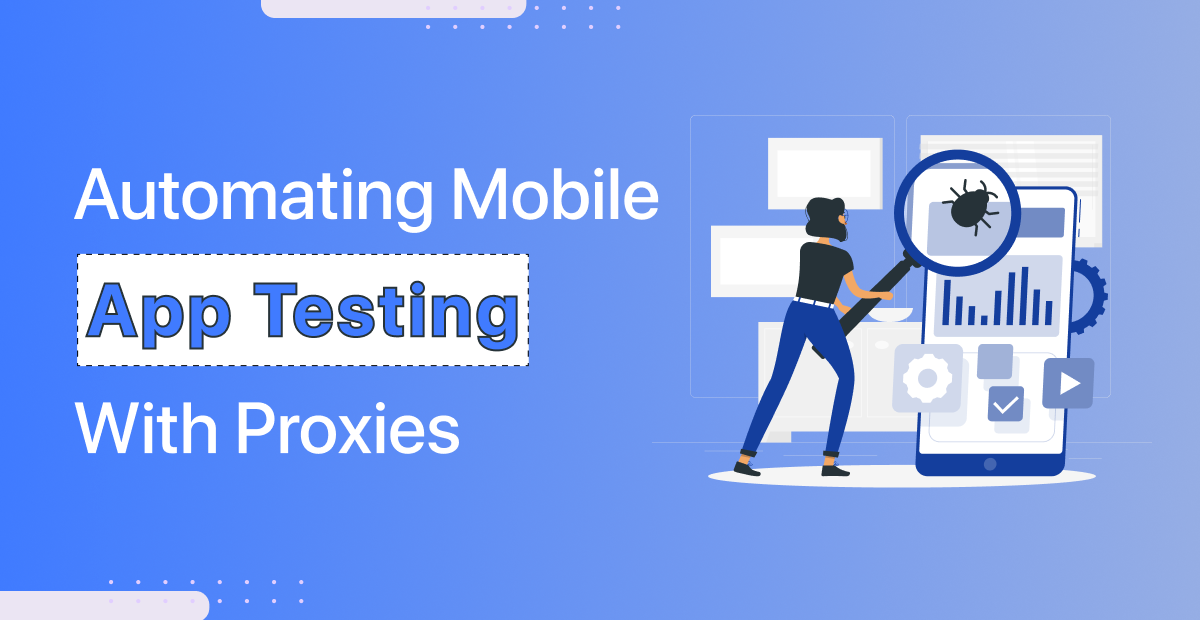Mobile app testing plays a crucial role in the software development life cycle, aiming to ensure that applications function as intended across diverse devices and operating conditions. This process evaluates the app’s performance, security, and user experience, helping developers identify and rectify potential issues before the app reaches end-users. However, traditional testing methods face significant hurdles, such as geo-restrictions and IP blocking, which can impede the ability to simulate and test applications under real-world conditions. Overcoming these challenges is essential to delivering high-quality, robust applications that meet the evolving demands of users globally.
Understanding Mobile Proxies
Mobile proxies are intermediaries that route internet traffic through real mobile devices, utilizing the IP addresses associated with these devices’ cellular connections. This process allows mobile proxies to emulate genuine user activities and interactions, providing an essential tool for developers and testers to assess mobile applications under varied network environments. These proxies are particularly adept at simulating user experiences across different geographical locations, thanks to their ability to dynamically switch IP addresses as they connect to various mobile networks.
The use of mobile proxies in automating mobile app testing offers significant advantages. By mimicking real-world network conditions and user behaviors, mobile proxies enhance the accuracy and comprehensiveness of the testing process. This capability is crucial for validating an app’s performance and ensuring its robust functionality across all user scenarios. Additionally, a reliable provider of mobile proxies can facilitate testing across global markets without the constraints of geo-restrictions or IP blocking, thus broadening the scope of testing and improving the end product.
Benefits of Mobile Proxies in Automating App Testing
Real-World Testing Environment: Mobile proxies excel in creating a testing environment that mirrors real-world usage. By routing traffic through actual mobile networks, these proxies enable developers to simulate how an app performs across diverse network conditions and geographic locations. This capability is crucial for ensuring that apps deliver consistent and reliable user experiences worldwide, irrespective of local network reliability or speed.
Enhanced Testing Efficiency: One of the standout benefits of mobile proxies is their ability to facilitate parallel testing across multiple devices and networks simultaneously. This parallelization significantly speeds up the testing process, allowing teams to execute more tests in less time. Such efficiency not only accelerates development cycles but also helps in quicker identification and rectification of potential issues.
Overcoming Geo-restrictions and IP Blocks: Mobile proxies provide an effective solution to bypass regional content restrictions and IP blocks that can skew testing results. By accessing content as if from different regions, testers can ensure that applications perform as expected in all intended markets without being hindered by geo-specific barriers. This global testing approach ensures comprehensive coverage and helps maintain the integrity of test results.
Challenges and Considerations
Potential Challenges: While mobile proxies are powerful tools, they come with challenges such as latency issues, particularly when the proxies are not optimally located relative to the target servers. The quality of the mobile proxies also plays a crucial role; low-quality proxies might lead to compromised test results due to poor connection stability or incorrect geo-location reporting.
Ethical and Legal Considerations: The use of mobile proxies must adhere to ethical and legal standards, particularly regarding data protection regulations. Testers must ensure that their use of mobile proxies complies with all applicable laws and respects user privacy. Misusing proxies to access or scrape content without permission can lead to legal repercussions and damage the reputation of the testing organization.
By addressing these challenges and considerations, businesses can maximize the benefits of mobile proxies in their mobile app testing processes, ensuring both efficiency and compliance.
Case Studies
One notable example of successful integration of mobile proxies into mobile app testing workflows comes from a global financial services company. To ensure their banking app functioned seamlessly across multiple countries, the company used mobile proxies to simulate user interactions from various geographic locations. This testing was crucial during the launch of new region-specific features, such as currency conversion and local payment integration, ensuring that the app met all regional compliance and functionality standards before going live.
Another case involved a popular streaming service that needed to test its application under various network conditions, including 2G, 3G, and 4G. By using mobile proxies, the company could mimic these environments, allowing them to optimize streaming performance and buffering algorithms to enhance user experience under any network constraint. This approach was particularly beneficial during the expansion into emerging markets, where network speeds varied significantly.
These examples demonstrate how mobile proxies can provide a competitive edge by allowing companies to conduct thorough and realistic tests, ensuring their applications perform optimally in any situation or location.
Conclusion
Mobile proxies have emerged as a game-changing technology in the realm of mobile app testing, offering unparalleled capabilities to simulate authentic user experiences across diverse network conditions and geographical boundaries. Their ability to facilitate testing under real-world scenarios ensures that applications are not only functional but also optimized for user satisfaction regardless of location or network variability.
The strategic integration of mobile proxies enables businesses to comprehensively evaluate app performance, from regional feature compatibility to network resilience. This holistic approach to testing is crucial in preempting potential user issues, enhancing the app’s market readiness, and reducing the likelihood of negative feedback post-launch.
As the digital ecosystem becomes more complex and user expectations continue to rise, the role of mobile proxies in app development and testing workflows is increasingly indispensable. Companies that embrace this technology can expect to see significant improvements in their testing processes—faster turnaround times, more accurate data collection, and ultimately, a superior product offering.




